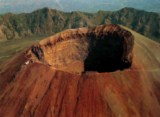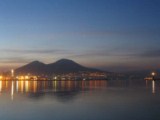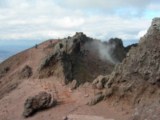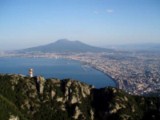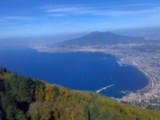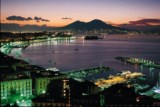|
VESUVIUS VOLCANO - CAMPANIA - SOUTH ITALY The Vesuvio (Vesuvius), a dominating feature of the Neapolitan landscape, is known throughout the world. Its fame started in 1884 with the inauguration of the funicular railway to the top of the mountain (originally 1336 meters high, reduced to 1200 meters after the eruption in 1906).
It's circumference is about 50 km, and is in fact formed by Two volcanoes: the "Monte Somma" volcano, oldest one, that exploding in prehistoric time destroyed the top of a volcano leaving a vast crater, which now hosts the Vesuvius itself. The top of the volcano enjoys two fantastic views, one is the most breathtaking panorama on the coast and the sea, and the other, a "once in a lifetime" view that can't be missed: its impressive chasm by the falling sides that sink towards the heart of the earth. |
||||||||


